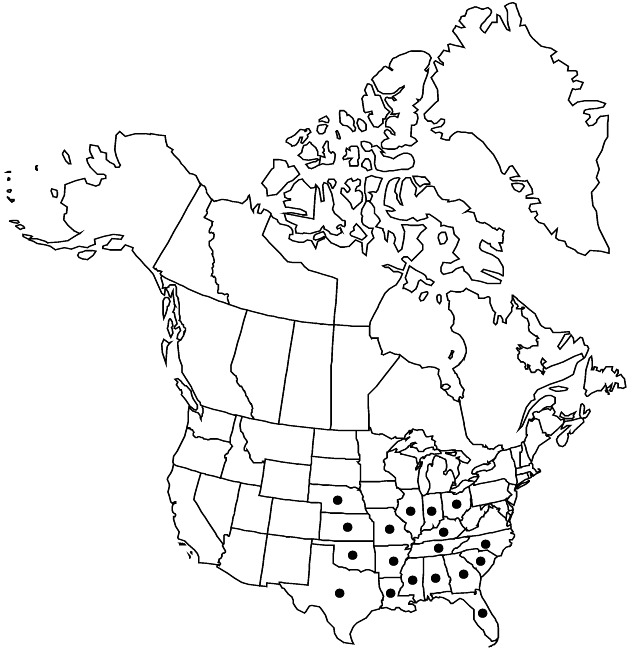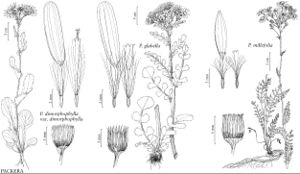Packera glabella
Kew Bull. 47: 101. 1992.
Annuals or biennials, 20–70+ cm; fibrous-rooted (caudices relatively short, weak). Stems 1 (striated, frequently hollow, often pink to purple-tinged), glabrous or leaf-axils sparsely tomentose. Basal leaves (and proximal cauline) obscurely petiolate; blades obovate to oblanceolate, sometimes lyrate (lateral lobes to 5 pairs, terminal lobes larger than laterals), 50–150+ × 10–30+ mm, bases tapering, ultimate margins crenate to irregularly undulate. Cauline leaves gradually reduced (weakly clasping, similar to basal). Heads 8–30+ in umbelliform or cymiform arrays (robust plants with multiple arrays). Peduncles bracteate, glabrous or bases tomentose. Calyculi conspicuous (bractlets 2.5–4 mm). Phyllaries (13–) 21, green, 5–7 mm, glabrous. Ray-florets (8–) 13; corolla laminae 7–9 mm. Disc-florets 35–50+; corolla-tubes 2.5–3.5 mm, limbs 2–3 mm. Cypselae 1–1.5 mm, sparsely hirtellous on ribs or glabrous; pappi 3–4 mm. 2n = 46.
Phenology: Flowering (Feb–)mid Mar–late May.
Habitat: Open wet areas, edges of woodlands, stream banks, roadsides, meadows, marshes, fallow fields
Elevation: 0–600 m
Distribution

Ala., Ark., Fla., Ga., Ill., Ind., Kans., Ky., La., Miss., Mo., Nebr., N.C., Ohio, Okla., S.C., Tenn., Tex.
Discussion
Packera glabella is common and almost weedy in wet, partially shaded places. The hollow, striated stems of P. glabella are distinctive.
Selected References
None.
